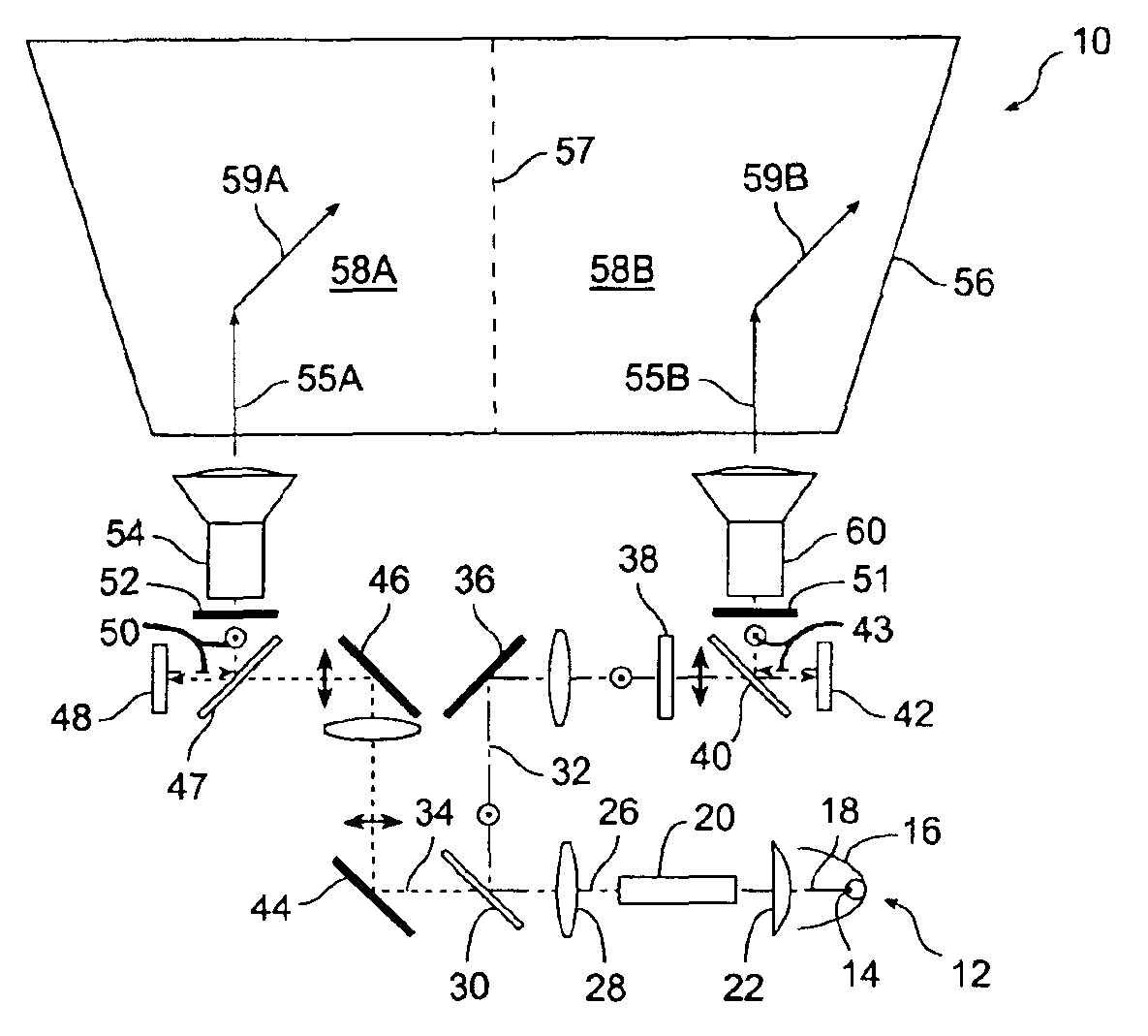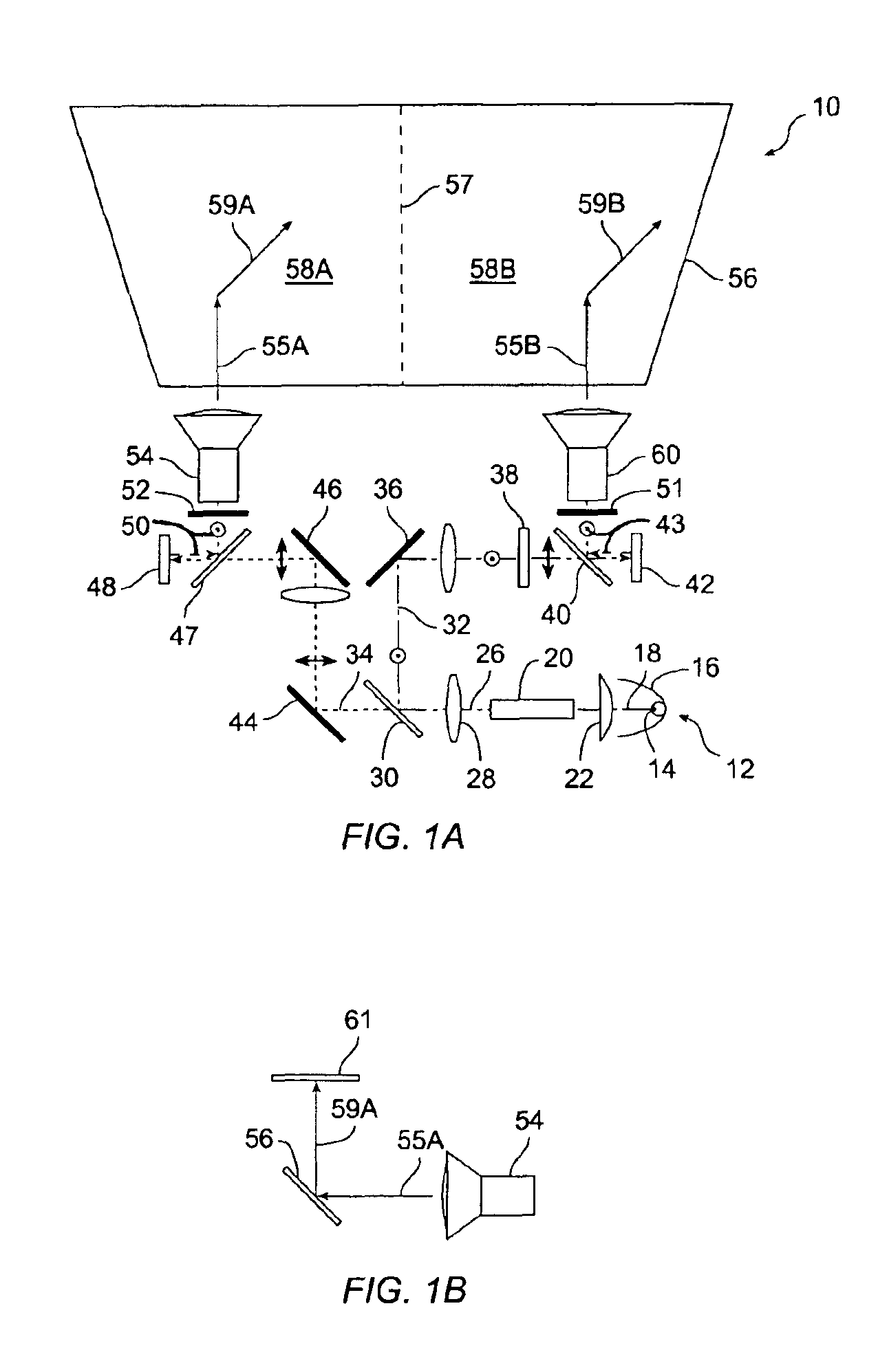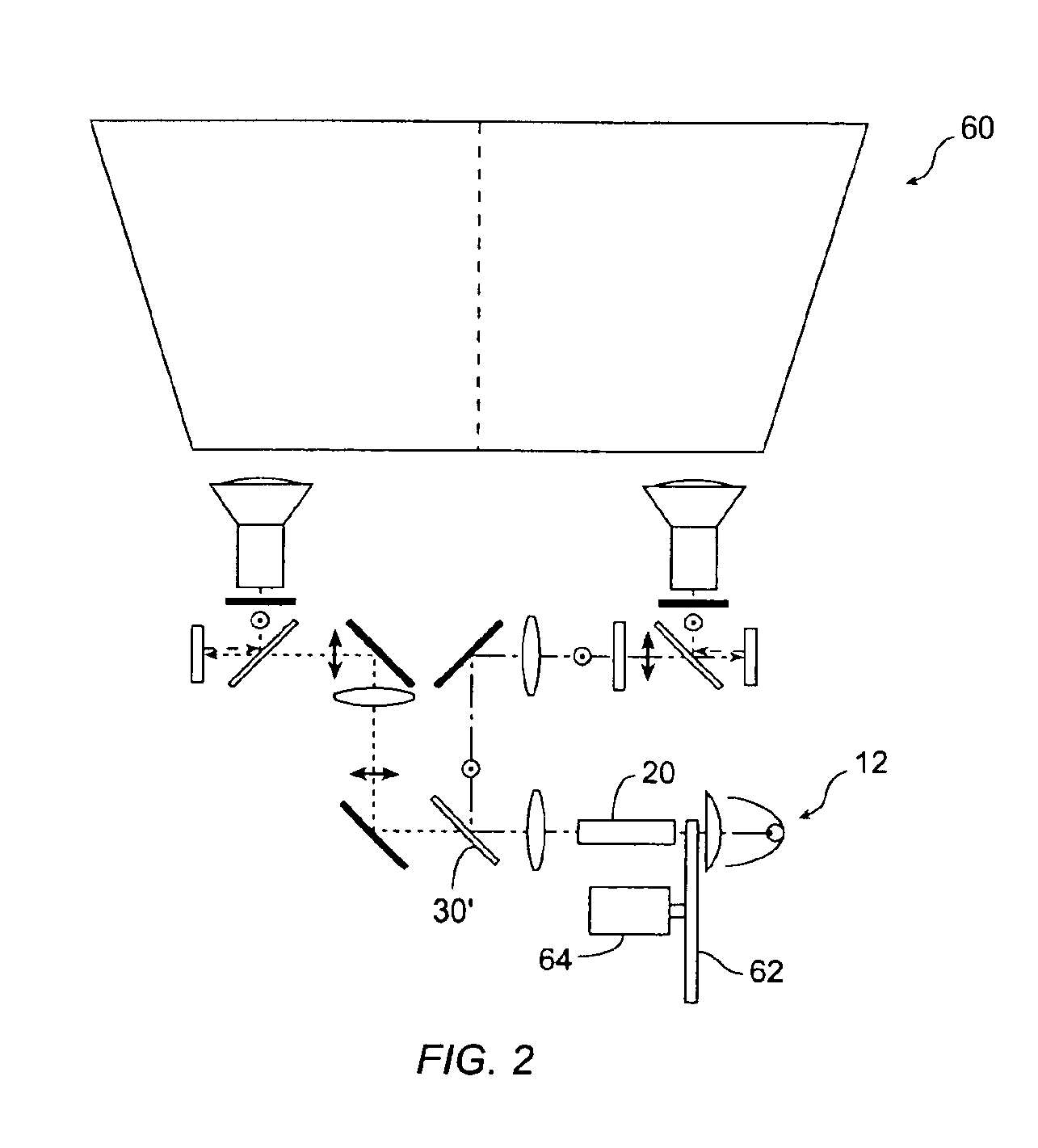High-resolution projection display system
a projection display and high-resolution technology, applied in the field of image display systems, can solve the problems of unsuitable resolution for large-format displays, adversely affecting yield-per-wafer and cost, and achieve the effect of enhancing the resolution of the display image and compact projection system
- Summary
- Abstract
- Description
- Claims
- Application Information
AI Technical Summary
Benefits of technology
Problems solved by technology
Method used
Image
Examples
Embodiment Construction
I. Introduction
[0014]A projected image is formed from partial images produced by a plurality of SLMs. The modulated light from the each SLM forms a portion of the projected image, and the portions are combined (“stitched”) to form a high-resolution image on a display screen. For example, image portions from two SLMs, each having two million pixels, are stitched together to form a projected image having about four million pixels.
[0015]In one embodiment, liquid-crystal on silicon (“LCoS”) SLMs are used. LCoS SLMs modulate polarized light by reflection. In conventional image display systems, unpolarized light from the lamp is filtered with a pre-polarizer and light having the undesired polarization state is discarded, reducing brightness. Altenatively, light having the undesired polarization state is converted to light of the desired polarization state and is provided to a LCoS SLM. Such techniques are known as polarization conversion / recovery systems, but increase the complexity, cost...
PUM
| Property | Measurement | Unit |
|---|---|---|
| optical path length | aaaaa | aaaaa |
| size | aaaaa | aaaaa |
| information density | aaaaa | aaaaa |
Abstract
Description
Claims
Application Information
 Login to View More
Login to View More - R&D
- Intellectual Property
- Life Sciences
- Materials
- Tech Scout
- Unparalleled Data Quality
- Higher Quality Content
- 60% Fewer Hallucinations
Browse by: Latest US Patents, China's latest patents, Technical Efficacy Thesaurus, Application Domain, Technology Topic, Popular Technical Reports.
© 2025 PatSnap. All rights reserved.Legal|Privacy policy|Modern Slavery Act Transparency Statement|Sitemap|About US| Contact US: help@patsnap.com



